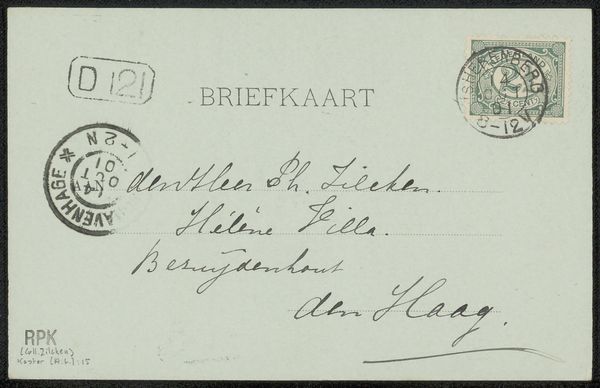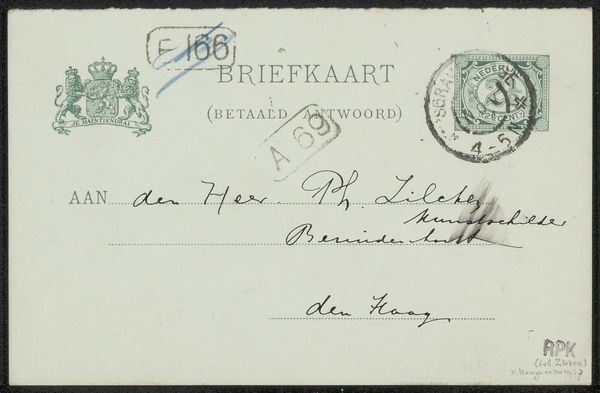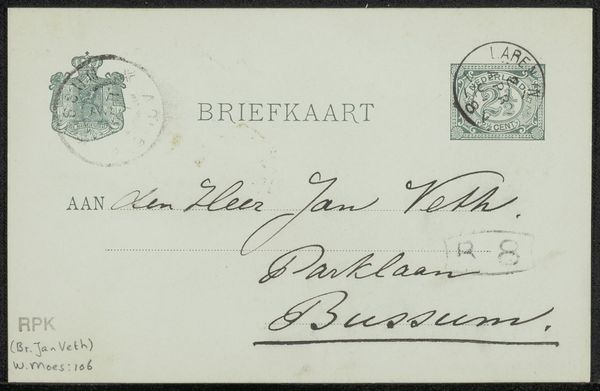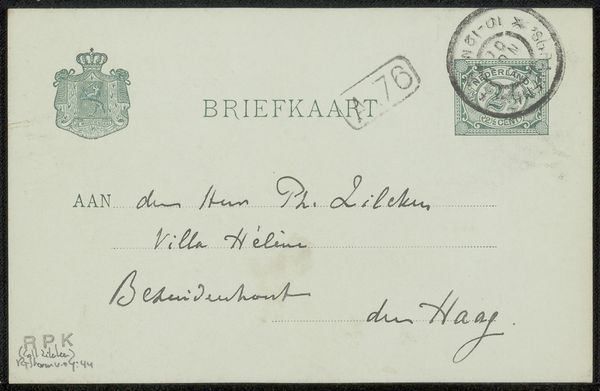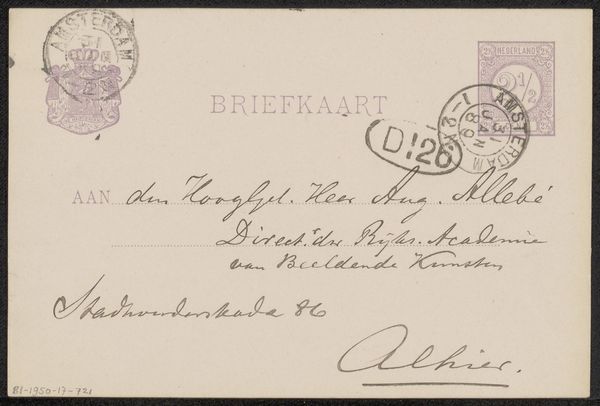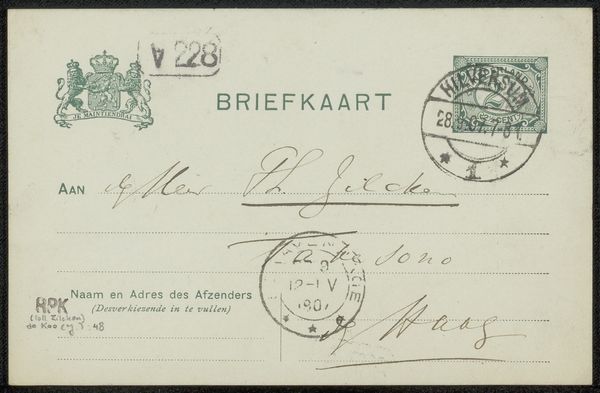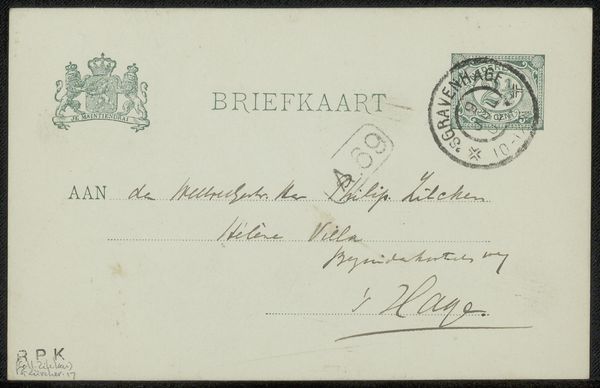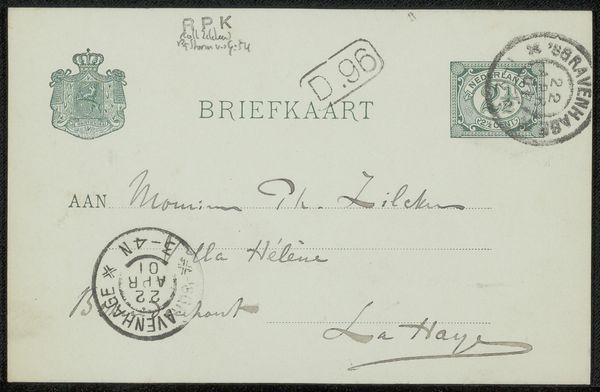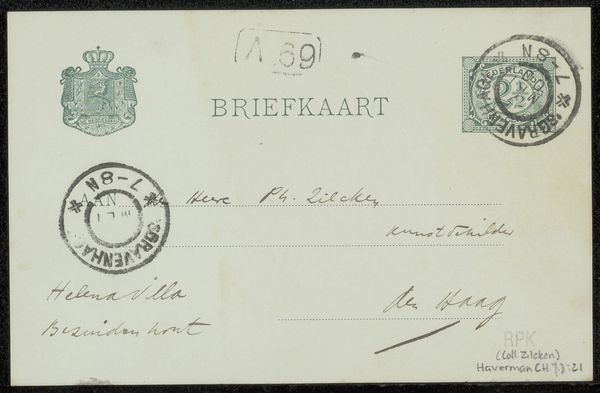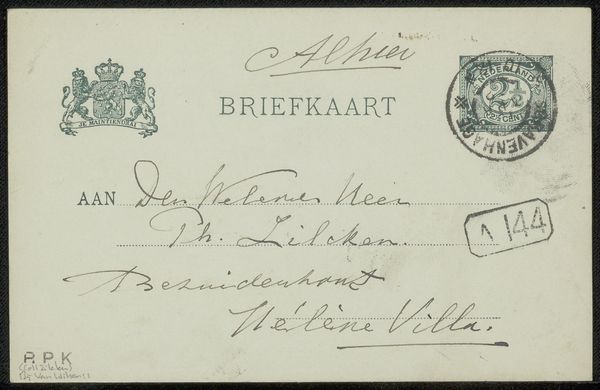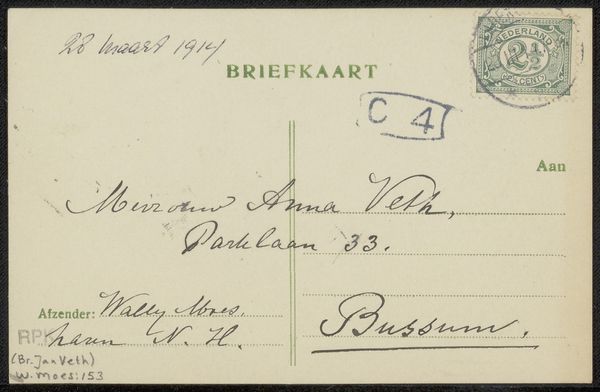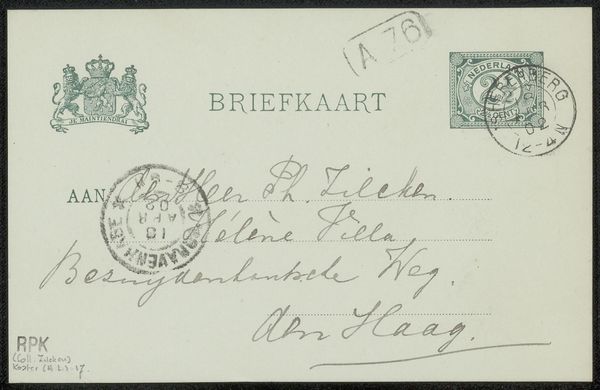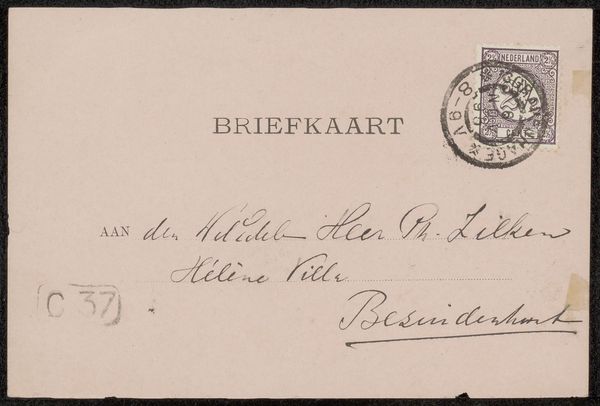
drawing, paper, ink
#
drawing
#
hand written
#
script typography
#
hand-lettering
#
hand drawn type
#
hand lettering
#
paper
#
personal sketchbook
#
ink
#
hand-written
#
hand-drawn typeface
#
pen work
#
handwritten font
#
calligraphy
Copyright: Rijks Museum: Open Domain
Curator: It’s a fascinating peek into a personal exchange. Here we have "Briefkaart aan Philip Zilcken" – that is, "Postcard to Philip Zilcken" – penned by J. de Mink, sometime before 1908. It’s executed in ink on paper, a simple drawing capturing an ephemeral moment in time. Editor: It has such a ghostly quality. Pale paper, faded ink...the writing almost floats there. The density of information—the address, stamps—is making me feel strangely melancholic. Curator: The hand-lettering definitely contributes. There’s an intimacy in the script. It makes the everyday communication of the period so palpable. It connects us back to a moment when even casual communication was a unique visual expression. Editor: Right, think about it, so many different "voices" present themselves. There’s the official stamp of the Dutch postal service, the crest with the lion rampant...yet then the personalized handwriting pushes against this very formal structure. Curator: Indeed! It underlines the public role of written correspondence. The postal system, emerging alongside expanding civic life. A way of binding society through a shared infrastructure, like newspapers... but even more personalized. You share your handwriting in a sense with the postmen as well. Editor: All these unseen hands! I am just imagining its journey... the sender, the recipient, various postal workers... So much handling yet the message itself feels so immediate. You also notice that it looks as if it might be from a personal sketchbook? Maybe the sender was toying around and ended up sending one of their practice attempts as a postcard. Curator: It would certainly emphasize its personal dimension and function in relation to Zilcken and Mink’s social lives. An intriguing idea… this interplay between intent and accident could have been part of their communication style as well. We don’t really know what message this card contained, it is not present on the other side. Editor: Perhaps the message itself wasn’t the entire point. Maybe it was the connection forged, or the shared experience surrounding their method of delivery, that mattered most of all. A quiet affirmation between two individuals. Curator: Precisely, and how this image has continued to move, now taking on another role in the cultural sphere for visitors like ourselves, with the ability to see and interpret the layers behind it. Editor: Agreed, that is what makes objects such as this particularly captivating: the combination of these public and private functions across historical moments.
Comments
No comments
Be the first to comment and join the conversation on the ultimate creative platform.
